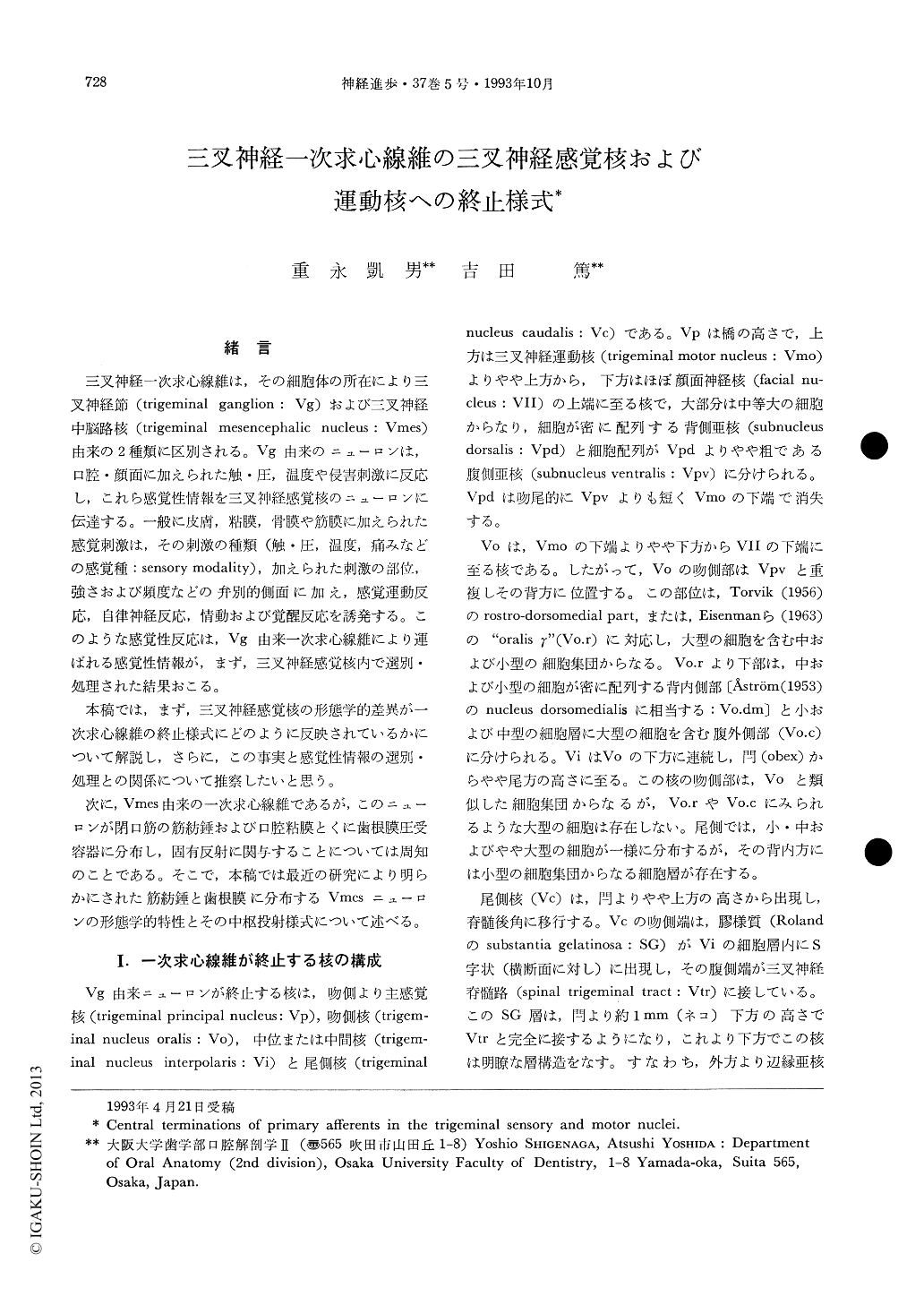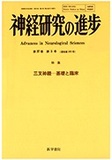Japanese
English
- 有料閲覧
- Abstract 文献概要
- 1ページ目 Look Inside
緒言
三叉神経一次求心線維は,その細胞体の所在により三叉神経節(trigeminal ganglion:Vg)および三叉神経中脳路核(trigeminal mesencephalic nucleus:Vmes)由来の2種類に区別される。Vg由来のニューロンは,口腔・顔面に加えられた触・圧,温度や侵害刺激に反応し,これら感覚性情報を三叉神経感覚核のニューロンに伝達する。一般に皮膚,粘膜,骨膜や筋膜に加えられた感覚刺激は,その刺激の種類(触・圧,温度,痛みなどの感覚種:sensory modality),加えられた刺激の部位,強さおよび頻度などの弁別的側面に加え,感覚運動反応,自律神経反応,情動および覚醒反応を誘発する。このような感覚性反応は,Vg由来一次求心線維により運ばれる感覚性情報が,まず,三叉神経感覚核内で選別・処理された結果おこる。
本稿では,まず,三叉神経感覚核の形態学的差異が一次求心線維の終止様式にどのように反映されているかについて解説し,さらに,この事実と感覚性情報の選別・処理との関係について推察したいと思う。
The advent of multiple-level techniques has lead to a substantial increase of our understanding of the central organization of primary afferent projections. This organization has been elucidated by transganglionic and intra-axonal labeling of horseradish peroxidase (HRP). The origin of cells of trige-minal afferents is located in the trigeminal ganglion and the trigeminal mescencephalic nucleus. The central organization of primary afferents of ganglionic origin is as follows. The representation of the intraoral and facial structures in the trigeminal sensory nuclei (TSN) are organized in a somatotopic fashion, while this organization is not homologous among its different subdivisions, namely, the sub-nucleus dorsalis (Vpd) and ventralis (Vpv) of the principal nucleus (Vp), nucleus oralis (Vo), nucleus interpolaris (Vi), and nucleus caudalis (Vc). A somatotopic organization with an inverted open-mouthed face is most faithfully reflected in the rostral Vpv and the caudal Vi, while the Vpd, rostro-dorsomedial (Vo.r) and dorsomedial parts (Vo.dm) of the Vo, and dorsomedial Vi receive projec-tions from primary afferents supplying oral structures only. In the Vc, there is a deep to superficial and a rostrocaudal topographic (onion-leaf) organization, as well as the expected inversion of the head. Single fiber study indicates that tooth pulp, periodontal ligament, vibrissa, guard hair, and hairy skin afferens give rise to morphologically distinct terminal arbors in each nucleus of the TSN with respect to the frequency of collateral branching, arbor's shape, density of boutons, and bouton sizes. The collateral morphology of the same fiber or functional calss of primary afferents is also distinct between the different nuclei. These results indicate that the anatomical differentiation of TSN reflects a distinct projection pattern and morphology of terminal arborization from the same fiber or functional class between different nuclei, and the relationship between these morphological distinctions and its functional significance is discussed.

Copyright © 1993, Igaku-Shoin Ltd. All rights reserved.


